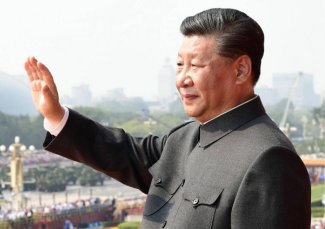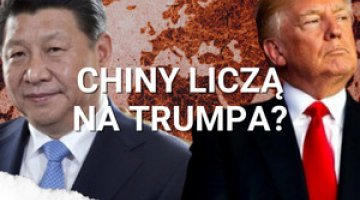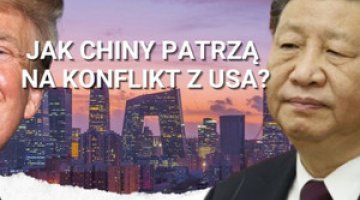China’s responses to the global COVID-19 pandemic

The start of the global COVID-19 pandemic, which the WHO officially announced on 11 March, coincided with China effectively halting the spread of the virus within the country. Official data states that there are currently no more than a few dozen new symptomatic cases daily throughout the country, and these mostly concern people returning from abroad. Beijing is maintaining a number of restrictions; schools and some parts of the service sector remain closed, internal travel is limited, and procedures for combating the pandemic are being maintained (such as measuring individuals’ temperatures). Some regions are more closely regulated than others. Compared with February, economic activity and social life have partially returned to normal, which both the central and local Communist Party authorities have been pressing for. However, controls on international traffic have increased. The quarantine requirements for people entering China have been progressively tightened up; the procedure now lasts 14 days, and is being conducted in specially designated centres. On 28 March the government cancelled almost all the visas for foreigners it had previously issued (they must be applied for once again), and restrictions on airlines have also been introduced (one flight to China per week per airline).
The fight against COVID-19, which began in late January, has been associated with several weeks of significant containment of economic activity in China, covering Hubei province and many other areas of the country. This was the result of both administrative decisions (including stopping the activity of specific industries and the work of schools), as well as restrictions on population movement (especially workers returning to the factories after the Chinese New Year). According to official data, in January & February industrial production in China dropped by 13.5% year-on-year, retail sales by 20.5% and investments by 24.5%. These are the largest falls in the officially recorded totals since comparable statistics began to be published. Since mid-March, the Chinese government has actively sought to reactivate industrial plants and services (while maintaining some restrictions, including on transport and catering); nevertheless, many companies are still operating without their full complement of workers. According to estimates by Bloomberg, economic activity in mid-March amounted to around 82% compared to the corresponding period last year; in the services sector the figure is only around 60%.
Despite the serious domestic situation, Beijing is continuing its assertive military behaviour in East Asia and the South China Sea. On 10 February the People's Liberation Army resumed its provocative flights around Taiwan, which had been discontinued because of the presidential & parliamentary elections held there in January. On 23 March there was a series of skirmishes between the so-called ‘people’s marine militia’ (fishing boats operating on behalf of the Chinese government and protected by coastguard units) and Taiwanese patrol boats. On 26 March Taiwan announced large-scale manoeuvres based on defending the island against invasion. In recent weeks China has opened new research stations on artificial islands in the South China Sea; on 10 March its air and naval forces carried out joint manoeuvres, and on 21 March anti-submarine exercises were held. In response to Beijing’s activities around Taiwan and the South China Sea, the US Navy conducted test missile launches in the same waters, coinciding with the defensive manoeuvres by Taiwan.
Since the epidemic broke out in the PRC, US-Chinese relations have experienced a series of tensions; these have included the evacuation of some American diplomats (a move which Beijing criticised), restrictions on entry into the US from China, and mutual expulsions of journalists. Since mid-March, China’s press and several of its top diplomats have been conducting an intensive information campaign aimed at undermining the US’s role in the global fight against the pandemic, as well as the epidemiological activities which the US government has undertaken inside the country. Some diplomats have also begun to promote fake news reports that the SARS-CoV-2 virus originated in the US and was transferred to Wuhan by a US military sports team. The US government responded by ramping up its accusations of neglect by the Beijing government at the start of the epidemic, and by summoning the Chinese ambassador to the State Department, among other actions. President Donald Trump, who had hitherto been relatively restrained in relation to China’s response to the pandemic, began to openly criticise China in this context, calling SARS-CoV-2 ‘the China virus’; he also made an attempt to introduce this rhetoric into the communiqué issued at the end of the G7 summit. In response, the Chinese media began to openly accuse him of racism. However, since the G20 summit was held, Beijing has clearly eased off some of its rhetoric. The video conference which was held by state leaders on 26 March ended with a joint declaration that the G20’s members are determined to fight the pandemic and protect lives, jobs and financial stability. On the same day Trump had a telephone conversation with Xi Jinping – at the latter’s request.
Since mid-March Beijing has boosted its diplomatic activity towards the European Union, related to the supply of Chinese medical equipment to EU countries. These deliveries have been primarily commercial in nature, and large batches of advanced equipment (filtration masks, overalls, ventilators) were ordered by the governments of the Czech Republic and Spain, among others. On a smaller scale, Beijing has simultaneously been sending supplies of non-returnable aid to Europe, including equipment and personnel support via the Red Cross, as well as supplies of masks from private foundations. These activities have been accompanied by a lively diplomatic propaganda campaign, promoting the image of China as a source of support for Europe and the global leader in the fight against the pandemic. The reaction from the EU’s high representative for foreign policy, Josep Borrell, emphasised the political goals of China’s “diplomacy of generosity”, and called on member states to prepare for a “battle for influence” with Beijing. The Chinese campaign was also referred to by the head of the European Commission Ursula von der Leyen and Chancellor Angela Merkel of Germany, who stressed that China’s non-returnable aid was an act of reciprocation for the earlier aid sent to China from the EU.
Commentary
- In mid-March 2020 the PRC’s government succeeded in halting the exponential increase in the number of infections on its territory, primarily due to the very restrictive and economically costly activities it undertook in February. This happened despite several weeks of inaction and the concealment of the outbreak in Wuhan at the turn of the year. At present, China is entering the second phase of its fight against the COVID-19 virus and its consequences, aimed at reducing the risk of a new wave of infections; the measures it is employing include maintaining some of the domestic restrictions, as well as reducing the inflow of people from other areas affected by the pandemic (which de facto now means the rest of the world). There are individual local reports that some cases are not being included in the overall statistics; this suggests that local outbreaks of COVID-19 may still be occurring within the country, although in national terms the situation seems to be under relative control. The shift to the next phase of the pandemic is now working in the PRC’s favour, although this effect will decrease over time. This stems from Beijing’s relatively stable domestic situation, while the rest of the world, including the developed economies of the West, becomes significantly more destabilised. In the first weeks after the outbreak of the global pandemic, this situation led to more aggressive actions by China in the international arena, including in East Asia, as well as towards the US and the EU.
- China’s relative political stability during the pandemic is associated with the changes that have been implemented by the General Secretary of the Chinese Communist Party, Xi Jinping. His broad-based anti-corruption campaign has partially purged the party cadres of their most corrupt members, but above all it has restored discipline and strengthened the leading position of the CCP leadership under Xi. In the crisis situation, this has allowed the party apparatus to maintain its cohesiveness and to carry out a brutal but effective campaign to eradicate the first wave of COVID-19. The CCP is trying to take advantage of the relative improvement of the situation in China compared to other countries to rebuild its domestic legitimacy. Communist Party propaganda presents China as the only country to have combated the pandemic effectively, and which is providing wide-ranging assistance to others while the rest of the world has been plunged into chaos. In the face of an anticipated deterioration in the economic situation, both in China and around the world, the stimulation of nationalism and the construction of a narrative that China is reaching the position of a global superpower are important tools for increasing public support.
- The pandemic has pushed the question of the protests in Hong Kong into the background; they had been one of the most important factors destabilising the internal politics of the PRC since March 2019. However, the intensity of the continual demonstrations there has dropped off significantly since last autumn. This trend has been reinforced because of the epidemic in Hong Kong (limiting the scale of the protests) and the deepening economic crisis it has caused. The pandemic has been accompanied by an increase in Beijing’s direct influence on the region’s administration and judiciary, as well as an increase in the brutality which the security forces have employed. It is significant that when it expelled US media correspondents from the PRC, Beijing forbade them from working in Hong Kong, once again violating the territory’s local autonomy. This indicates that the authorities in Beijing are convinced they have control of the situation, and are not afraid of a revival of the protests. In the coming weeks, Hong Kong will be a secondary issue for the PRC leadership; however, it will return to the agenda as the September elections to the region’s Legislative Council approach. The issue of the re-education campaign in Xinjiang is in a similar state, now that it has disappeared from global news reporting and has ceased to be a subject of pressure from the international community.
- Despite a short-term improvement in the economic situation, China’s local economic problems and the prospect of a global recession remain fundamental challenges for its rulers. While the resumption of economic activity represents great progress compared to the situation in February, the official GDP target for 2020 may not be met (the figure is probably around 6%, but no target has been officially set as the next session of the NPC has been postponed), and GDP growth in general has also been called into question. According to certain estimates, the decline in the first quarter could amount to between 9% and 13% year-on-year. As yet there is no sign of a rescue package comparable to that used during the crisis of 2008-9; this should be linked with a lack of room for manoeuvre in monetary and fiscal stimulation, including the extremely high indebtedness of the corporate sector and local authorities. The actions of the Chinese central bank and the government have focused primarily on the direct provision of credit (liquidity) to banks and the corporate sector (especially SMEs), which is intended to postpone the threat of bankruptcy, as well as on a temporary reduction of administrative levies. The domestic restrictions overlap with the problems concerning international demand for Chinese exports, which is associated with the threat of recession in the US and the EU, as well as restrictions on the movement of people between China and the countries struggling with the pandemic. This could lead to another blow to the economy and another decline in activity in the coming months. A possible second wave of viral infections in China would multiply these problems.
- Despite the serious problems related to the outbreak of disease in the PRC, Beijing has not given up its provocative military operations in China’s immediate vicinity, and since mid-March it has increased their intensity. This is being done in a situation of increased political tensions related to the pandemic, as is visible in China’s relationship with Washington, as well as the more assertive position adopted by Tokyo (which has accused China of making errors in its fight against the pandemic). In this context, despite the fact that the PRC’s actions have not gone beyond its practice of the last few months, they could nevertheless lead to military escalation. It seems that China’s latest actions were primarily dictated by a fear of showing weakness; the waters off East Asia are an area of relatively high military activity, and are always a testing ground for regional rivals. The relative improvement in China’s epidemiological situation has allowed it to accompany these actions with a positive diplomatic offensive in the Southeast Asia region, combining traditional promises of business investments and immediate medical assistance in the face of the pandemic. It seems that Beijing is testing its neighbours’ determination in the crisis situation caused by the COVID-19 virus and its economic consequences. Its effectiveness in urging Vietnam and Malaysia to make concessions seems limited here, but its progress in neutralising the Philippines’ resistance means that Beijing will continue its unilateral actions in the region, which will be accompanied by hints of economic aid or prospects for significant investments.
- The shift to the next phase of the pandemic has given China a temporary advantage over the US, pushing Beijing into adopting a more aggressive policy towards Washington, especially in the propaganda dimension. This was intended not only to distract from the errors made within the PRC itself which ultimately contributed to the global pandemic, but also to undermine the superpower status of the United States and the concept of democracy as such, and promote an authoritarian model of governance. At the end of March, however, Beijing began to moderate its rhetoric. This should be linked to the strongly negative reactions in the Western press and social media (including in Europe) criticising the ostentatious Chinese propaganda and its use of fake news, as well as the concerns about a possible rupture in diplomatic relations with the US. The whole situation has also revealed divisions within the PRC’s diplomatic and propaganda apparatus, in which the more aggressive tendencies have given way to a more moderate approach. The effects of the pandemic on the economic conflict with the United States have so far been beneficial to China, which has achieved a temporary freeze on the trade war. Beijing’s declarations that it would not be able to meet all the commitments of the ‘Phase One Deal’ have not yet provoked a negative response from Washington. The US’s actions in other areas have dropped in intensity, but have not been halted. The administration is preparing further actions against Huawei, among other measures; and on the same day as his telephone conversation with Xi Jinping, President Trump signed the so-called TAIPEI Act, the purpose of which is to prevent Beijing from bringing over the last few countries that recognise Taiwan as an independent state onto its side.
- After initial successes and a positive reception, China’s propaganda and diplomatic actions towards the EU has in the end brought mixed results. The presentation of its equipment supplies as an essential source of aid (for Italy among others) was picked up by Eurosceptic forces and used to launch attacks on Brussels and the member states. This provoked reactions from European leaders and the European Commission, who distanced themselves from the PRC and pointed out the politicised nature of the Chinese supplies. China’s positive reception in Italy was undermined by Beijing’s attempts to build a narrative that the virus actually originated in Italy, which was part of the campaign to conceal the Chinese government’s initial incompetence in Wuhan. Great losses of prestige were also incurred by scandals associated with the poor quality of the equipment commercially supplied to Europe (including uncertified masks and tests for the virus), which forced the governments of the Netherlands and Spain to recall the equipment from hospitals. Beijing’s control over the supplies is being used as a diplomatic instrument (large commercial deliveries must be agreed on at the political level), which has forced many pandemic-stricken European countries to distance themselves from the more tough US diplomatic line and limit their criticism of Beijing. Concern is increasing that the PRC will in future demand economic concessions, for example permission for Chinese companies to build 5G telecommunications networks. The supplies from China are still being received positively by some parts of European public opinion, although when the EU begins its economic recovery, this may lead to open discussion on whether to assume a more confrontational policy towards Beijing. This will be dictated by the need to repatriate as many jobs and strategic industries as possible from East Asia to the EU.




